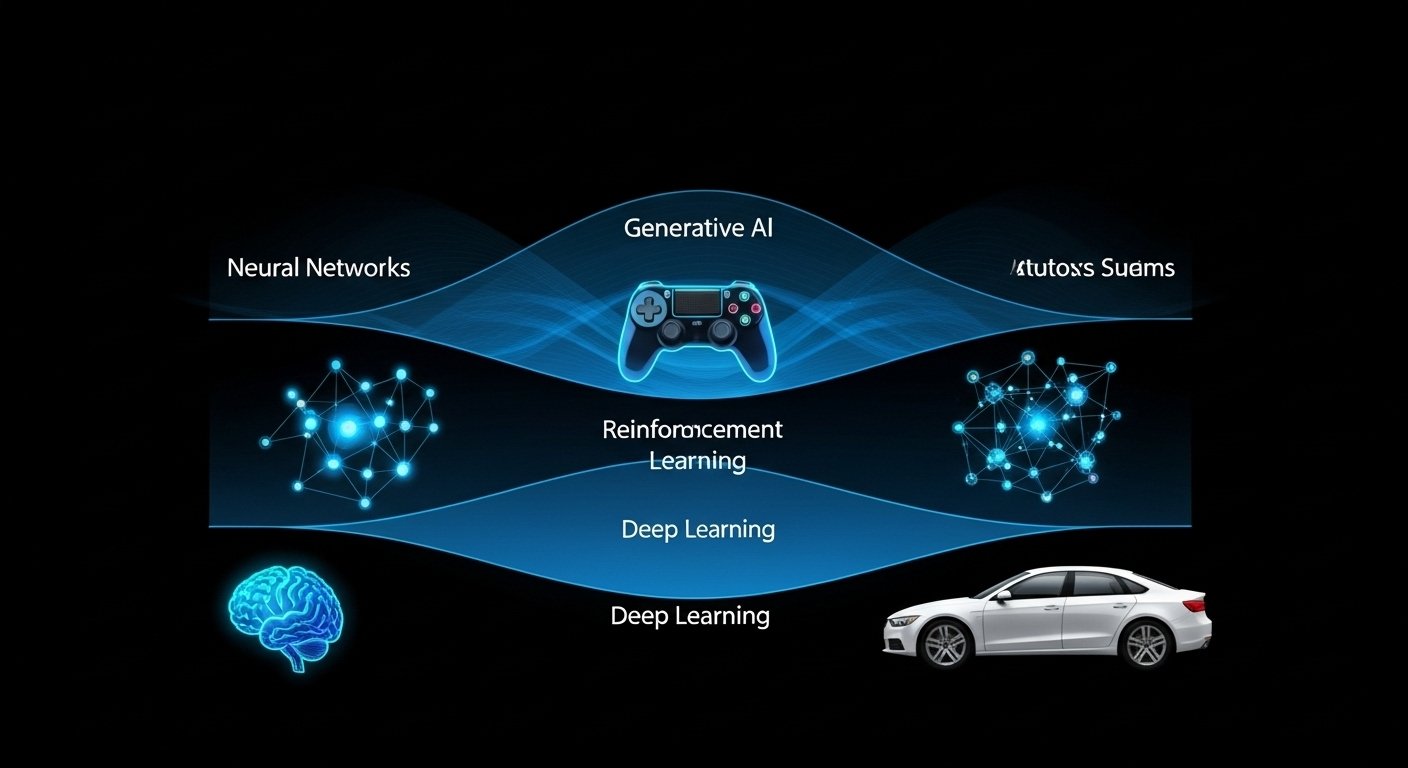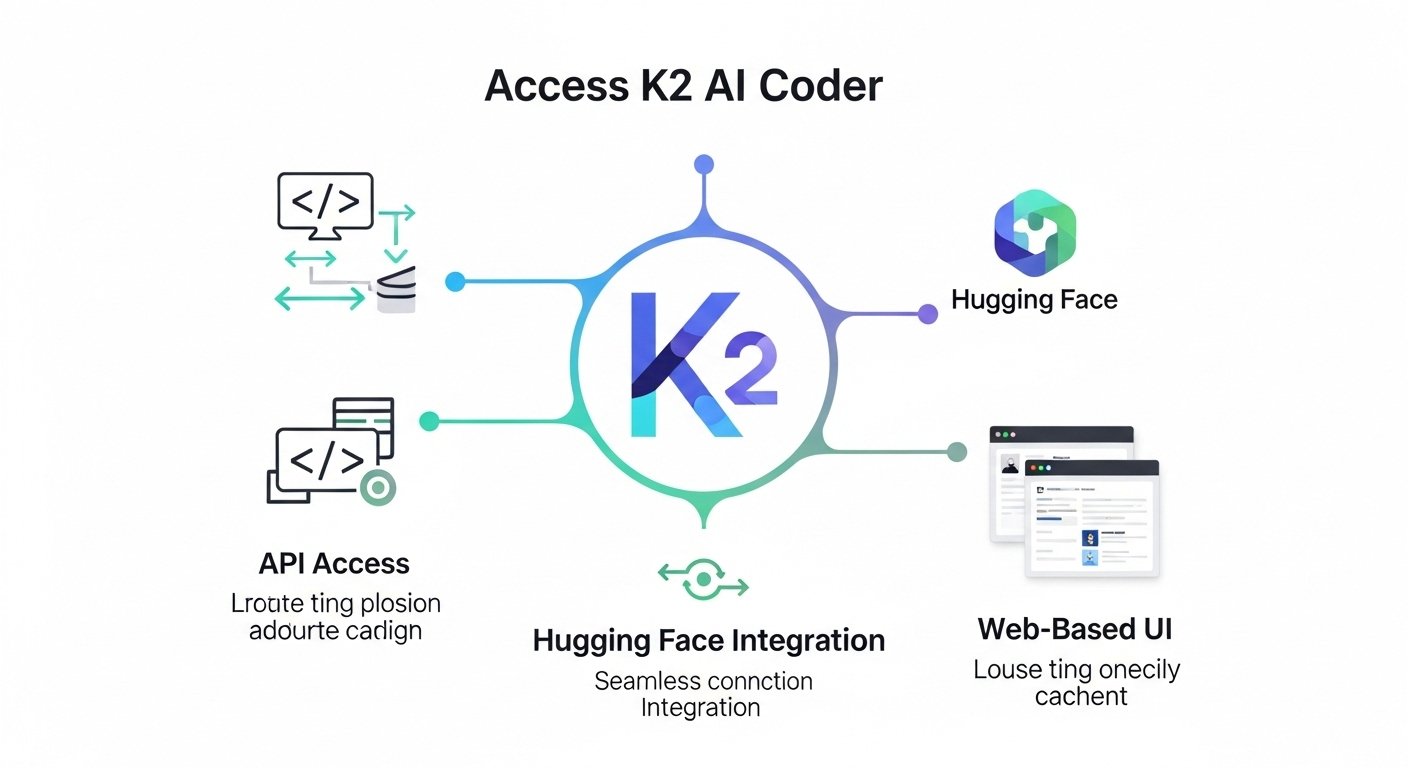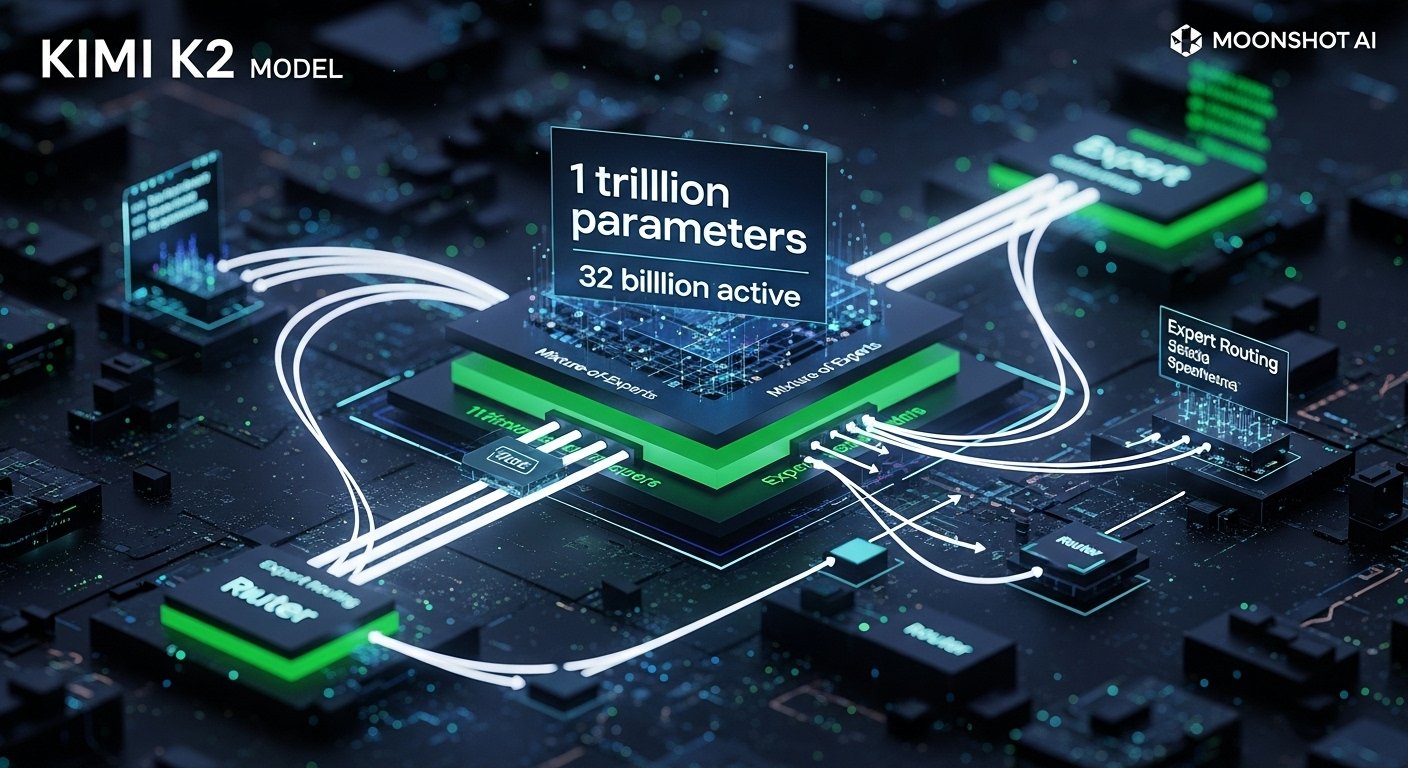The five waves of AI represent the revolutionary journey of artificial intelligence from its theoretical foundations to the advanced autonomous systems transforming industries today. As AI continues reshaping business operations, understanding these evolutionary phases becomes crucial for organizations looking to leverage artificial intelligence effectively. With the global AI market projected to reach $3,680.47 billion by 2034 and 78% of organizations already using AI in at least one business function, recognizing these waves helps businesses position themselves strategically in an AI-driven future.
Each wave of AI development has brought distinct capabilities, applications, and challenges that have progressively expanded artificial intelligence’s reach across industries, from healthcare and finance to manufacturing and transportation.
What Are the Five Waves of AI?
The five waves of AI framework provides a comprehensive roadmap for understanding how artificial intelligence has evolved from experimental research to practical business applications and future autonomous systems. This progression isn’t merely chronological—each wave builds upon previous capabilities while introducing transformative new possibilities.
These waves help organizations understand where AI technology currently stands and what capabilities they can expect in the coming years. Rather than viewing AI as a single technology, the five waves perspective reveals AI as an evolving ecosystem of interconnected capabilities that continue expanding human potential across multiple domains.
The framework also demonstrates how AI adoption has accelerated dramatically, with enterprise usage jumping from 55% to 78% in just one year, indicating that businesses across all sectors are recognizing AI’s competitive advantages.
First Wave: The Big Bang of AI
The first wave of AI marked the foundational breakthrough that made modern artificial intelligence possible. This period centered on the discovery that combining large datasets with powerful computing resources and deep neural networks could create unprecedented AI capabilities.
Key Characteristics of the First Wave
During this foundational phase, researchers discovered that traditional rule-based programming approaches had significant limitations. The breakthrough came when scientists realized that machines could learn patterns from massive amounts of data rather than following pre-programmed instructions.
The first wave established several critical principles:
-
Deep learning architectures became the backbone of AI systems
-
Graphics processing units (GPUs) provided the computational power necessary for training complex models
-
Large datasets became recognized as fuel for AI algorithms
-
Pattern recognition capabilities emerged as AI’s core strength
Real-World Impact
This wave produced the first commercially viable AI applications, including early recommendation systems, basic image recognition, and fundamental natural language processing capabilities. Companies like Google and Facebook began implementing these technologies to improve user experiences and operational efficiency.
The first wave laid the groundwork for everything that followed, establishing the technical infrastructure and foundational algorithms that power today’s advanced AI systems.
Second Wave: Cloud Computing Revolution
The second wave of AI democratized access to artificial intelligence by moving powerful computing resources to cloud platforms. This transition removed significant barriers to AI adoption, enabling organizations without massive infrastructure investments to experiment with and deploy AI solutions.
Cloud-Based AI Transformation
Cloud computing fundamentally changed the AI landscape by providing:
-
Scalable computing power on demand
-
Pre-trained AI models accessible through APIs
-
Reduced upfront infrastructure costs
-
Global accessibility to advanced AI capabilities
Major cloud providers like Amazon Web Services, Microsoft Azure, and Google Cloud Platform began offering AI-as-a-Service solutions, making sophisticated machine learning tools available to businesses of all sizes.
Market Impact and Statistics
The cloud AI revolution contributed significantly to the current market dynamics where the global AI market reached $638.23 billion in 2025, with cloud-based solutions driving much of this growth. Small and medium enterprises particularly benefited, with adoption rates reaching 11.21% for small enterprises and 20.97% for medium enterprises in 2024.
This wave enabled rapid experimentation and innovation, as developers could access powerful AI tools without investing in expensive hardware or specialized expertise.
Third Wave: Enterprise AI Integration
The third wave of AI represents the period when large organizations began systematically integrating artificial intelligence into their core business processes. This wave transformed AI from experimental technology to essential business infrastructure.
Enterprise Applications and Use Cases
During the third wave, AI found practical applications across multiple business functions:
-
Financial Services: Fraud detection systems analyzing transaction patterns in real-time
-
Healthcare: AI-assisted diagnostics and treatment recommendation systems
-
Retail: Personalized marketing campaigns and inventory optimization
-
Manufacturing: Predictive maintenance reducing equipment downtime
-
Customer Service: Conversational AI chatbots handling routine inquiries
Adoption Statistics and Growth
Current data reveals the extensive penetration of enterprise AI, with 78% of organizations now using AI in at least one business function, representing a significant increase from 55% the previous year. Large enterprises lead adoption with 41.17% implementation rates, demonstrating AI’s value in complex organizational environments.
The enterprise AI market shows remarkable growth across sectors, with healthcare AI revenue reaching $90.48 billion, banking and financial services hitting $102.26 billion, and retail achieving $62.06 billion in 2024.
Implementation Challenges and Solutions
Third wave adoption revealed important lessons about AI implementation:
-
Organizations with formal AI strategies achieve 80% success rates compared to only 37% for those without clear strategies
-
Integration complexity requires significant organizational change management
-
Data quality and governance become critical success factors
-
Employee training and change management prove essential for successful adoption
Fourth Wave: Edge AI and Real-Time Processing
The fourth wave of AI represents the migration of artificial intelligence capabilities from centralized cloud systems to edge devices, enabling real-time processing at the source of data generation. This wave addresses critical limitations of cloud-based AI, including latency, privacy concerns, and connectivity requirements.
Edge AI Market Growth and Statistics
The edge AI market demonstrates explosive growth, valued at $25.65 billion in 2025 and projected to reach $143.06 billion by 2034, representing a compound annual growth rate of 21.04%. This growth reflects increasing demand for low-latency processing and real-time decision-making capabilities across industries.
North America currently dominates the edge AI market with a 40% share, while the Asia Pacific region is experiencing the highest growth rate due to rapid urbanization and significant investments in smart city technologies.
Key Applications and Technologies
Fourth wave AI enables numerous real-world applications:
-
Smart Cities: Traffic management systems optimizing flow in real-time
-
Healthcare: Portable diagnostic devices providing immediate analysis
-
Manufacturing: Industrial IoT sensors detecting anomalies instantly
-
Automotive: Advanced driver assistance systems processing road conditions
-
Retail: Smart cameras enabling automated checkout experiences
5G and IoT Integration
The deployment of 5G networks significantly accelerates fourth wave adoption by providing the high-speed, low-latency connectivity necessary for edge AI applications. This technology combination enables new possibilities in autonomous vehicles, remote surgery, and industrial automation.
Edge AI also addresses data privacy concerns by processing sensitive information locally rather than transmitting it to centralized servers, making it particularly valuable for healthcare and financial applications.
Fifth Wave: Full Autonomy and Independent AI Systems
The fifth wave of AI represents the evolution toward fully autonomous systems capable of independent navigation, decision-making, and operation without human intervention. This wave encompasses self-driving vehicles, autonomous drones, robotic systems, and other mobile AI-powered machinery.
Autonomous System Capabilities
Fifth wave AI systems demonstrate several advanced characteristics:
-
Independent environmental perception and analysis
-
Real-time decision-making in complex, unpredictable situations
-
Continuous learning and adaptation to new scenarios
-
Multi-modal sensor integration for comprehensive situational awareness
-
Fail-safe mechanisms ensuring operational safety
Current Development and Future Projections
While fully autonomous systems remain largely in development, significant progress is evident across multiple domains. Autonomous vehicle testing continues expanding, with companies like Tesla, Waymo, and traditional automakers investing billions in self-driving technology development.
The autonomous systems market is expected to grow substantially as fifth wave technologies mature, particularly in logistics, transportation, and industrial applications where autonomous operation can improve efficiency and safety.
Industry Applications
Several sectors are pioneering fifth wave AI implementation:
-
Transportation: Self-driving cars, autonomous trucks, and unmanned aircraft
-
Logistics: Warehouse robots and autonomous delivery systems
-
Agriculture: Self-operating farm equipment for planting, monitoring, and harvesting
-
Defense: Unmanned systems for reconnaissance and support operations
-
Space Exploration: Autonomous robots for planetary exploration and research
Real-World Impact and Current Applications
The five waves of AI have created tangible benefits across industries, with measurable impacts on productivity, efficiency, and innovation. Current adoption statistics demonstrate AI’s widespread integration into business operations, with different waves contributing distinct capabilities to organizational success.
Industry-Specific Transformations
Each industry has leveraged different AI wave capabilities to address specific challenges:
Healthcare has integrated third and fourth wave AI for diagnostic imaging, drug discovery, and patient monitoring systems, generating $90.48 billion in AI revenue during 2024.
Financial Services utilizes second and third wave technologies for fraud detection, algorithmic trading, and customer service automation, representing a $102.26 billion market segment.
Manufacturing combines third and fourth wave AI for predictive maintenance, quality control, and supply chain optimization, contributing $61.49 billion to the AI economy.
Productivity and Efficiency Gains
Organizations implementing AI across multiple waves report significant performance improvements. In the United States, 40% of employees now use AI at work, doubling from 20% in 2023, indicating rapid workplace integration and productivity benefits.
Global AI user adoption has reached 378 million regular users, demonstrating widespread acceptance and practical value across both professional and personal applications.
Future Implications and Emerging Trends
The five waves of AI framework provides insight into future technological developments and business opportunities. As each wave continues evolving, new possibilities emerge for organizations ready to leverage advanced AI capabilities.
Convergence and Integration
Future AI development will likely involve convergence between waves rather than sequential progression. Organizations are already implementing multi-wave strategies, combining cloud-based processing with edge AI capabilities and preparing for autonomous system integration.
The global AI market’s projected growth to $3,680.47 billion by 2034 suggests continued innovation and expansion across all five waves simultaneously.
Emerging Sixth Wave Possibilities
Some researchers propose potential sixth wave developments focusing on artificial general intelligence (AGI) and AI systems capable of creative content generation, scientific discovery, and complex reasoning that matches or exceeds human capabilities.
These advanced systems would represent a fundamental shift toward AI that can perform any intellectual task humans can accomplish, potentially transforming every aspect of human society and economic activity.
Strategic Planning Considerations
Organizations planning long-term AI strategies should consider:
-
Multi-wave implementation approaches combining different AI capabilities
-
Infrastructure requirements for supporting advanced AI systems
-
Workforce development and training programs for AI integration
-
Ethical frameworks and governance structures for responsible AI deployment
-
Partnership opportunities with AI technology providers and research institutions
The five waves framework provides a roadmap for strategic decision-making, helping organizations understand which AI capabilities align with their business objectives and operational requirements.
Conclusion
The five waves of AI represent a comprehensive evolution from foundational deep learning breakthroughs to fully autonomous systems that will define the future of technology and business. Understanding this progression helps organizations make informed decisions about AI adoption, investment priorities, and strategic planning.
With 78% of organizations already using AI and the market projected to reach $3,680.47 billion by 2034, the five waves framework provides essential context for navigating this transformative technology landscape. Each wave offers unique capabilities and opportunities, from cloud-based accessibility and enterprise integration to edge processing and autonomous operation.
As AI continues evolving, organizations that understand and leverage the capabilities from all five waves will be best positioned to compete effectively, drive innovation, and create sustainable competitive advantages in an increasingly AI-driven business environment. The five waves of AI represent not just technological progression, but a fundamental transformation in how humans and machines collaborate to solve complex problems and create value.
FAQs
Q1: What are the five waves of AI in order?
The five waves of AI are: First Wave (The Big Bang of AI with deep learning foundations), Second Wave (Cloud Computing Revolution), Third Wave (Enterprise AI Integration), Fourth Wave (Edge AI and Real-Time Processing), and Fifth Wave (Full Autonomy).
Q2: Which wave of AI are we currently in?
We are currently experiencing multiple waves simultaneously, with widespread Third Wave enterprise adoption (78% of organizations use AI), rapid Fourth Wave edge AI growth ($25.65 billion market), and early Fifth Wave autonomous system development.
Q3: How fast is the AI market growing across these waves?
The global AI market is expanding at a 19.20% CAGR, projected to grow from $638.23 billion in 2025 to $3,680.47 billion by 2034, with edge AI growing even faster at 21.04% CAGR.
Q4: What’s the difference between cloud AI and edge AI?
Cloud AI (Second Wave) processes data in centralized servers accessed via internet, while Edge AI (Fourth Wave) processes data locally on devices, providing faster response times, improved privacy, and reduced bandwidth requirements.
Q5: When will fully autonomous AI systems become mainstream?
Fifth Wave autonomous systems are still developing, with current applications mainly in testing phases for self-driving vehicles and industrial robots. Widespread adoption depends on technological advancement, regulatory approval, and safety validation processes.
Q6: How should businesses prepare for future AI waves?
Organizations should develop formal AI strategies (which achieve 80% success rates vs 37% without strategy), invest in employee training, establish data governance frameworks, and consider multi-wave implementation approaches combining different AI capabilities.








Leave a Reply